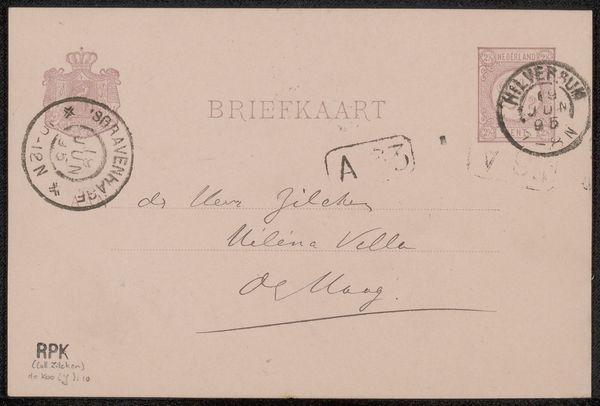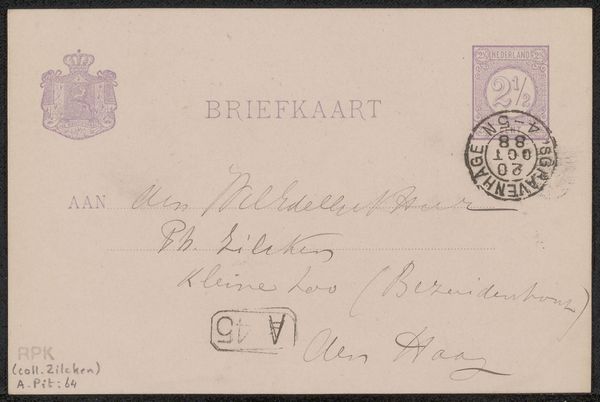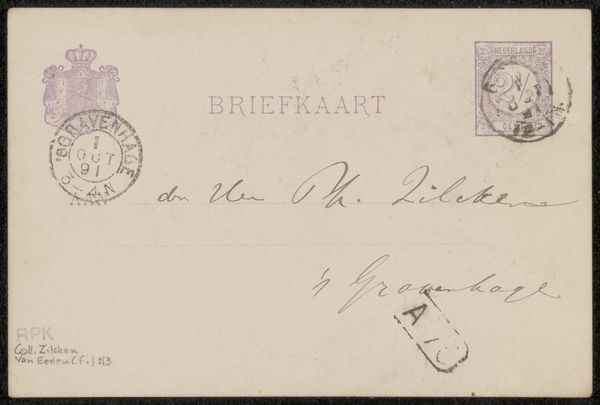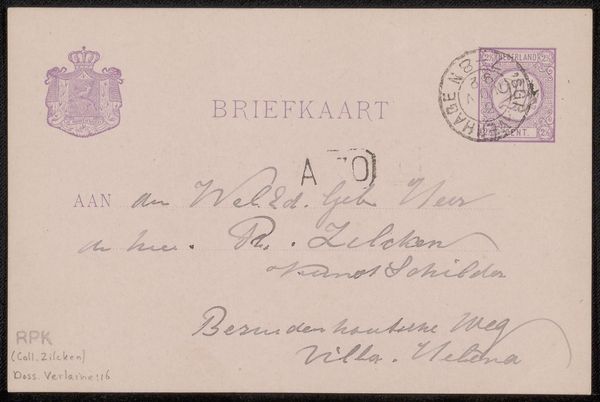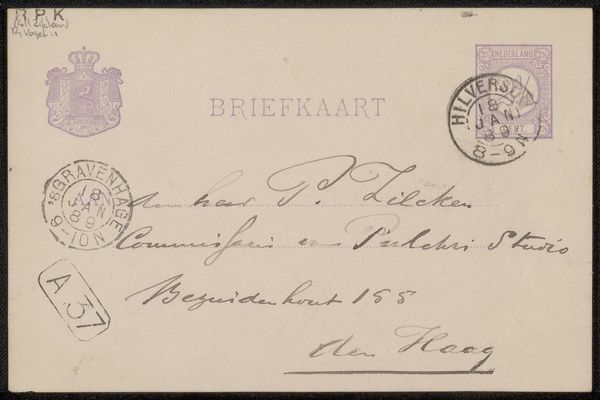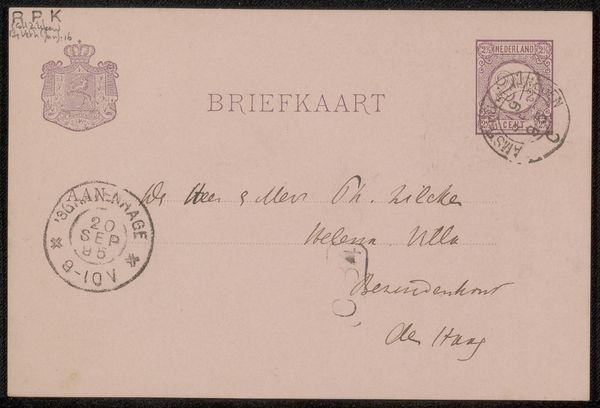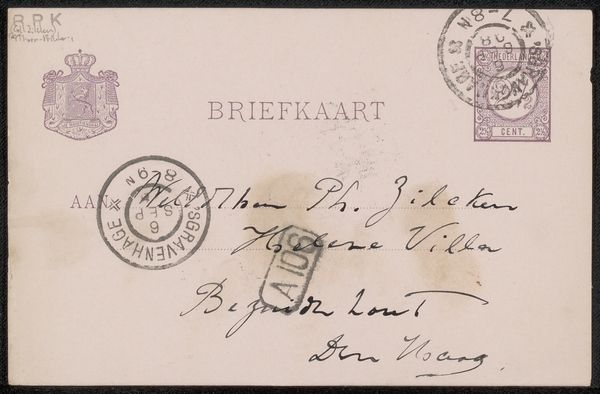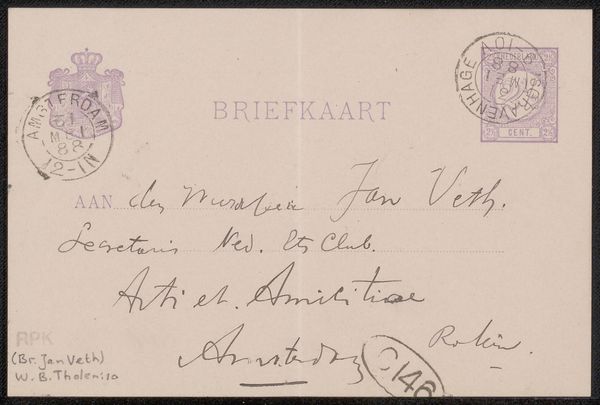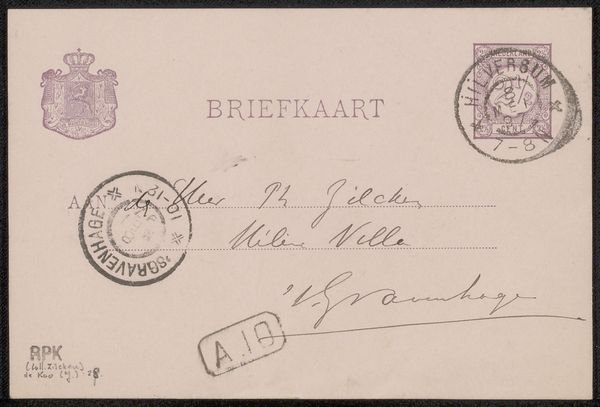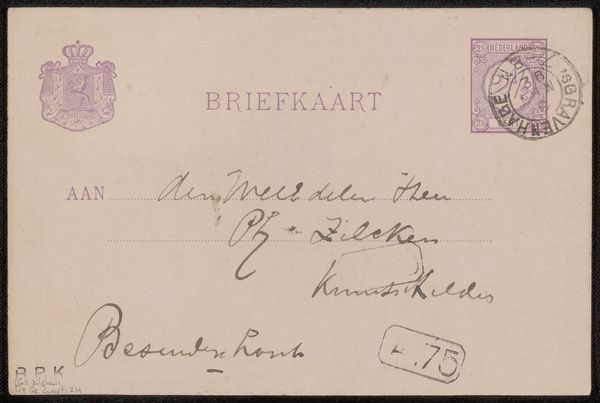
drawing, paper, ink, pen
#
portrait
#
drawing
#
ink drawing
#
pen drawing
#
paper
#
ink
#
pen
#
post-impressionism
Copyright: Rijks Museum: Open Domain
Curator: Let's examine this 'Briefkaart aan Philip Zilcken' created before 1899 by Johannes de Koo. The postcard, composed of pen and ink on paper, provides a unique lens through which to view the artist's social engagement and the material culture of the era. Editor: It's fascinating to consider a postcard as a work of art. What do you find most compelling about this particular piece? Curator: Well, for me it’s the layering of process. We have the original drawing – the labor of the artist using specific tools – overlaid with the postal markings, the stamp, and the handwriting of the sender and potentially postal workers. This speaks volumes about the means of communication available and the value placed on material correspondence during this period. The paper itself, as a mass-produced commodity intended for brief, functional communication, gains a different status when treated as a canvas. Editor: So you see the intersection of function and art? Do you think de Koo intentionally challenged those boundaries? Curator: I believe the intention matters less than the result. The drawing exists within this functional object. Its survival allows us today to examine a system of distribution and consumption. Was the artist simply using available materials, or was there a conscious commentary on mass production? Even unanswered, these are fruitful avenues for exploration. Editor: It’s amazing to think about the layers of context within this small object. Curator: Precisely. This is a potent example of how art intersects with everyday life and its historical production. A simple postcard reveals the complexity of its era. Editor: It makes you rethink what “art” really means!
Comments
No comments
Be the first to comment and join the conversation on the ultimate creative platform.
